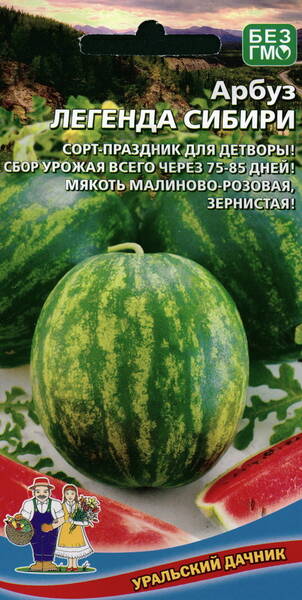Sweet granular pulp with a strong watermelon aroma, early ripening and large fruit are important qualities for a favourite autumn berry.
The plant is powerful, with a long main vine. Elongated spherical fruits weighing 4.6-6.1 kg ripen 75-85 days after emergence.
The pulp is tender, juicy, tasty, rich raspberry colour.
Resistant to anthracnose, tolerant to fusarium. Marketability and transportability are high, shelf life is good.
* Watermelon pulp contains many different vitamins (PP, C, D, B1, B2 and B6, carotene), it also contains iron salts, copper, phosphorus, potassium, calcium, zinc and folic acid. This combination of vitamins and microelements stimulates metabolic processes in the liver, improves the composition of bile, prevents stone formation in the gallbladder and bile ducts, and has an antisclerotic effect.
In terms of the content of iron salts, watermelon is second only to spinach and lettuce leaves, and in terms of the presence of folic acid it is in first place.
The presence of lycopene in watermelon makes it possible for it to fight cancer cells of many types.
Watermelon seeds are no less useful: they contain 25–30% oil, from which watermelon oil is made, which in its medicinal properties is not inferior to almond oil, and in taste is comparable to olive oil. Watermelon oil contains a lot of zinc and selenium.
Watermelon rinds are an order of magnitude richer in vitamins than the watermelon pulp itself, and they also contain many different amino acids.












